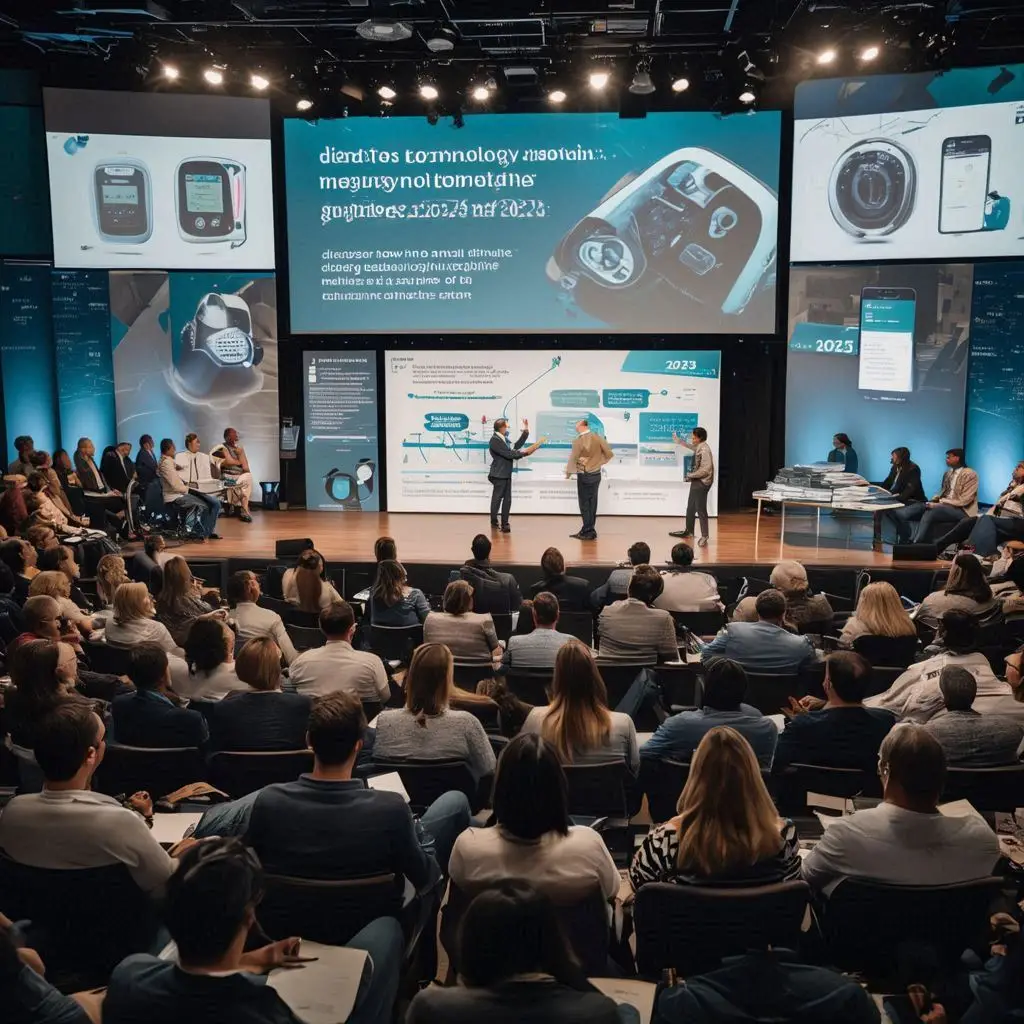
Diabetes Technology Meeting: The Guidelines Of 2025 And 2023
Discover how the annual Diabetes Technology Meeting has shaped the future of diabetes care through evolving technologies and evidence-based guidelines from 2023 to 2025.
Introduction
The world of diabetes care is rapidly evolving, thanks to innovative technologies and groundbreaking research. Central to this evolution is the Diabetes Technology Meeting (DTM)—a key event that unites clinicians, researchers, engineers, and industry experts to explore the latest advancements in diabetes treatment and management. With each annual conference, the meeting sets new benchmarks and establishes guidelines that significantly influence clinical practices and patient outcomes. This article explores the highlights of the Diabetes Technology Meetings of 2023 and 2025, their impact, and the latest diabetes technology guidelines that are shaping the future of care.
Diabetes Technology Meeting
The Diabetes Technology Meeting serves as the global epicenter for innovations in diabetes care.
Held annually by the Diabetes Technology Society (DTS), the Diabetes Technology Meeting is a globally recognized platform that showcases the latest research, technologies, and clinical practices in diabetes care. It brings together an interdisciplinary audience—from endocrinologists and biomedical engineers to AI experts and digital health entrepreneurs.
Over the years, the meeting has catalyzed the introduction of several advanced technologies such as:
- Continuous Glucose Monitoring (CGM)
- Automated Insulin Delivery (AID) systems
- Artificial Pancreas innovations
- Remote monitoring and telehealth integration
- Predictive algorithms powered by AI
More importantly, the DTM often serves as the launchpad for critical clinical trial results, device approvals, and regulatory discussions. It is also where emerging technologies are evaluated for integration into diabetes guidelines, ensuring that innovation is safely and effectively adopted into mainstream care.
Diabetes Technology Meeting 2025
The 2025 DTM highlighted AI integration, wearable insulin delivery systems, and personalized digital health platforms.
The Diabetes Technology Meeting 2025 was a landmark event, emphasizing patient-centric solutions driven by data and artificial intelligence. Several key trends emerged from this year’s conference:
- AI in Diabetes Prediction: Advanced machine learning models are now being embedded in CGM and insulin delivery devices to predict hypo/hyperglycemia episodes up to 30 minutes in advance.
- Wearable Insulin Tech: Innovations included skin-friendly patches capable of both glucose monitoring and micro-dosing insulin, eliminating the need for separate devices.
- Closed-Loop Systems 3.0: The new generation of closed-loop systems showcased at DTM 2025 improved algorithmic adaptability, reduced lag time, and enhanced user feedback mechanisms.
- Data Interoperability Standards: A major discussion was around creating unified data frameworks so patients, providers, and insurers can share and interpret data across devices and platforms.
- Regulatory Updates: The meeting included FDA and EMA-led panels to guide future technology approvals with streamlined regulatory paths.
In short, DTM 2025 focused on personalization, automation, and real-time responsiveness, setting new standards for diabetes care.
Diabetes Technology Meeting 2023
The 2023 DTM set the stage for hybrid systems, real-time remote monitoring, and early-stage AI integration.
The 2023 Diabetes Technology Meeting was pivotal in setting the groundwork for the technologies seen in 2025. While AI was in its early stages of adoption, the focus was on refining hybrid closed-loop systems and improving CGM accuracy. Key highlights included:
- Dexcom G7 and Libre 3 performance reviews, which showed improved accuracy and shorter warm-up periods.
- Early-stage dual-hormone systems, using both insulin and glucagon, were presented for better glycemic control.
- Telehealth platforms integrating real-time CGM data for remote patient consultations gained significant attention, especially in post-pandemic healthcare settings.
- Presentations on digital twin modeling—creating virtual simulations of patients to test drug and insulin responsiveness.
- Updates on pediatric and geriatric-specific device adaptations were also major themes.
The 2023 Diabetes Technology Meeting focused on affordable, accessible, and clinically proven diabetes technologies, aiming to make digital diabetes care more inclusive for patients of all ages and global regions.
Diabetes Technology Guidelines
Guidelines from DTM are shaping international diabetes care protocols by integrating validated technologies.
The Diabetes Technology Guidelines issued and influenced by the Diabetes Technology Society are not mere suggestions—they are often integrated into practice by the American Diabetes Association (ADA), European Association for the Study of Diabetes (EASD), and global regulatory bodies.
The most impactful guideline shifts from 2023–2025 include:
- Continuous Glucose Monitoring (CGM) is now a standard recommendation for all insulin-dependent diabetes patients, regardless of age, diagnosis timeline, or disease duration, enhancing safety and glycemic control.
- Mandatory algorithm transparency for insulin delivery systems using AI, to ensure safety and predictability.
- Universal remote monitoring frameworks, particularly for vulnerable or rural populations.
- Device data sharing mandates, improving collaboration between patients and multi-disciplinary care teams.
Furthermore, training guidelines for healthcare providers were updated, placing emphasis on digital literacy and tech-device counseling, ensuring effective patient onboarding and usage compliance.
Future Trends In Diabetes Technology
The future of diabetes care lies in smart, predictive, and integrative technologies.
While the guidelines of 2025 reflect current capabilities, the future of diabetes technology is even more dynamic. Emerging trends include:
- Non-invasive glucose monitoring technologies, including optical sensors and sweat-based diagnostics, are revolutionizing diabetes care by offering needle-free, real-time glucose tracking solutions.
- Smart insulin pens that track dosage and timing with app integration
- Genetic profiling for personalized insulin therapy
- Blockchain-secured health records to safely store and transfer diabetes data
- Voice-assisted diabetes management tools embedded in wearables and smart home systems
These innovations point toward an ecosystem where diabetes care is seamless, predictive, and integrated into everyday life.
Conclusion
The Diabetes Technology Meetings of 2023 and 2025 have not only introduced cutting-edge solutions but have also redefined how guidelines adapt to modern realities. With increasing focus on personalization, accessibility, and automation, these events have become crucial to shaping global diabetes care. From smart insulin patches to AI-driven algorithms, the innovations presented at DTM are already transforming outcomes and empowering patients. As technology continues to evolve, so too will the guidelines and strategies for living well with diabetes in a connected world.

